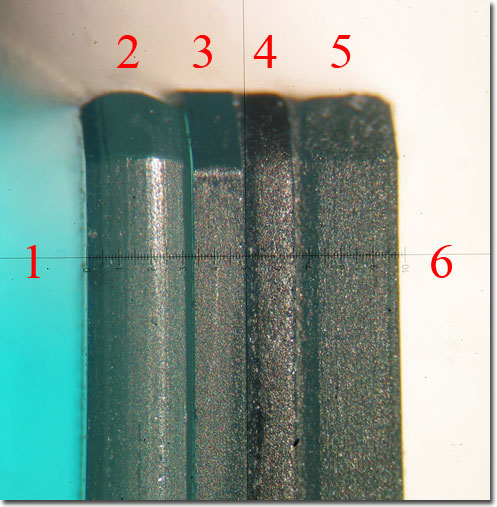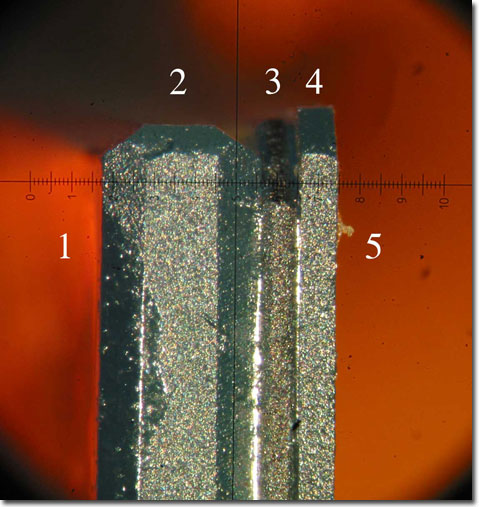low pass filter
The structure of the low pass filter in front of your sensor is more complicated than you probably expect. It consists of several layers which are glued together. Each layer has its own special task. Let's take the low pass filter of a Canon 30D/350D as an example.

The Filter has a total thickness of 2.45mm:
Layer number 1 is a hot mirror coating and reflects infrared light.
Number 2 is a double refractive crystal, probably lithium niobate. It is one part of the low pass filter and softens the image in horizontal direction to suppress aliasing artifacts. While the light passes through the crystal, the image is separated into an ordinary and an extraordinary image. The thickness of the layer determines how much the images are displaced and therefore determines the strength of the low pass filter. This layer is 0.825mm thick.
The images produced by the first low pass filter are linear polarized. Layer 3 is a λ/4 plate and converts the linear polarized light into circular polarized light. This is necessary because the second low pass filter won't work with linear polarized light. [0.425mm]
Number 4 is a cyan colored infrared absorption filter. It blocks the remaining IR light which passed the hot mirror. The cyan color is necessary for more natural red shades in the image. [0.375mm]
Number 5 is the vertical component of the low pass filter. [0.825mm]
Number 6 is a normal antireflective coating.
The filter of a Canon 5D is build similarly but only 1.45mm thick.

1) Hot mirror (reflects IR light)
2) horizontal low pass filter [1.0mm]
3) IR absorption filter [0.2mm]
4) λ/4 plate [0.25mm]
5) normal antireflective coating
Not shown is the vertical part of the low pass filter [1.0mm]. It's glued directly in front of the sensor and cannot be removed.